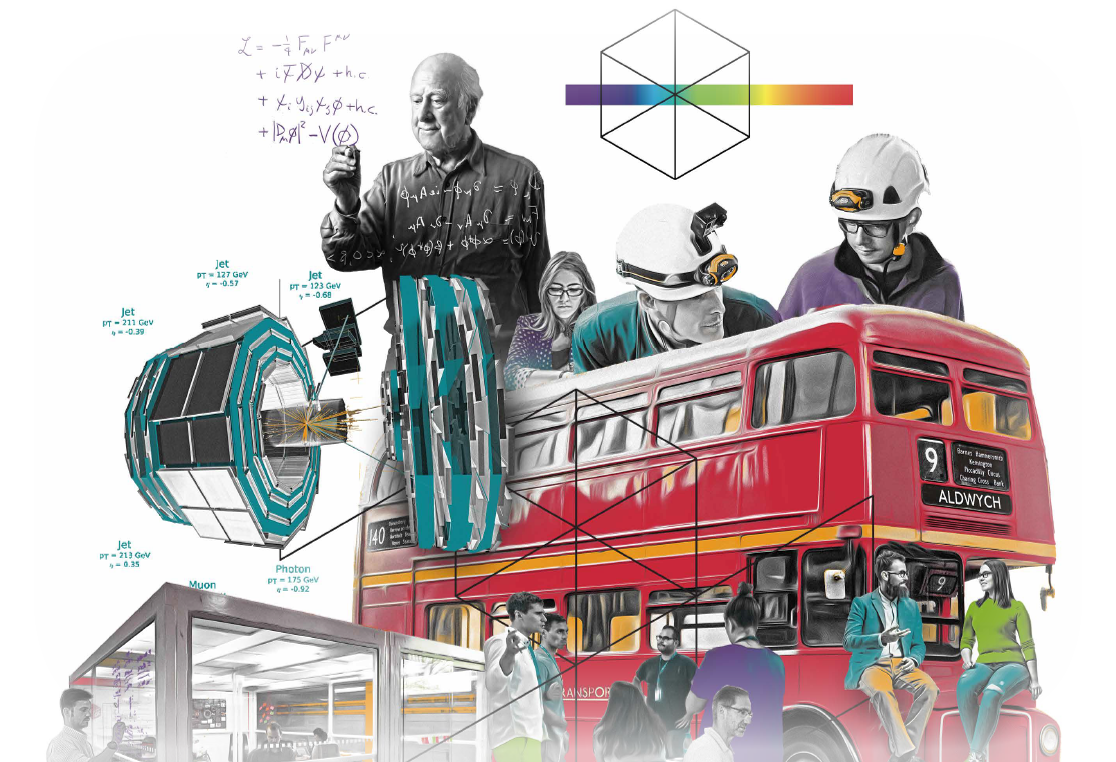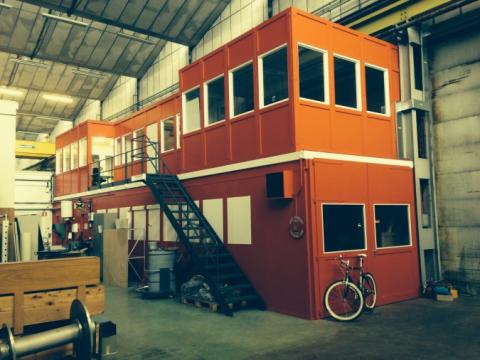Celebrating a decade of innovation connecting science and society: the journey of IdeaSquare

“Without the people, this is just an empty building”
Pablo Garcia Tello
This sentiment resonated deeply during the 10th-anniversary celebration of IdeaSquare, the innovation space at CERN, marking a decade of innovation, creativity, and collaboration. What began as an ambitious experiment has evolved into a vibrant hub where bold ideas meet daring execution.
The genesis of an idea
The story of IdeaSquare is a tale of serendipity, collaboration, and relentless experimentation. As Markus Nordberg recalled, it all began with a question: What could we do with the enormous amount of knowledge accumulated by the people who built the LHC?
This question sparked the creation of a space where scientists, engineers, technicians and non-technicians could “tinker in a good way”–a pre-R&D environment for early-stage experimentation. The core concept was crystalised as a building in which this knowledge could be transmitted to society, and it initially went by the name “ATLAB” for its proximity to the ATLAS.
Marzio Nessi shared how the evolution of IdeaSquare meant embracing uncertainty:
“When we started, we didn’t know exactly where we were going, but we knew we were onto something big. Anybody at CERN with an idea could come and realize it.”
Marzio Nessi
Together, Markus and Marzio travelled to Finland to visit the Aalto Design Factory, which deeply influenced the design philosophy of IdeaSquare. Kalevi “Eetu” Ekman, creator of the design factory and previously working at the CMS experiment, shared with them what he learnt with this experimental learning and co-creation community, emphasising that innovation thrives where structure meets chaos. An agreement was reached between them to adapt parts of the concept to the scientific environment of CERN.
The spirit of collaboration
At its heart, IdeaSquare is about people. From its early days, it brought together individuals from diverse disciplines and cultures. Mar Capeans, who helped select and acquire the building, highlighted the transformative power of this interdisciplinary approach:
“True innovation happens when people from different domains work together. It was an incredible learning path for all of us.”
Mar Capeans

The same spirit also birthed projects like the Marie Curie network, which connected universities, industries, and research centres.
The physical space of IdeaSquare started as a prototype itself, renamed IdeaLab. Harri Toivonen played a key role in shaping and designing the final building to foster creativity and interactions. He summed up the ethos of the space:
“There’s beauty in the mess. It’s about finding clarity within chaos to create something that can truly progress humanity or sustainability.”
Harri Toivonen
Sergio Bertolucci, director of research and scientific computing at CERN at the time and another key figure in IdeaSquare’s history, shared how the initiative came to life alongside the CERN Neutrino Platform that is now an integrated part of the DUNE experiment, and how the ATTRACT project sprung from it. He described the process of using the space as an evolving prototype:
“You want reality to surprise you.”
Sergio Betolucci
European projects have been an important part of this process, with ATTRACT which has gone through several phases, but also Crowd4SDG.
Looking to the future
Today, IdeaSquare is more than a physical space; it’s a living, breathing community. Sijbrand de Jong, Chair of the IdeaSquare Advisory Board, described the space’s constant evolution:
“Every time I think, 'Now I’ve got it!' it changes again. That’s the spirit of IdeaSquare–relentless transformation.”
Sijbrand De Jong
As IdeaSquare steps into its next decade, its mission remains clear: to dream boldly, innovate fearlessly, and bring people together to imagine a sustainable future. It is this desire that has driven its educational team to develop a new programme, IdeaSquare Planet, encouraging Master's level students to imagine a society from scratch as well as the way in which they could mobilise emerging technologies to build it in a sustainable manner.
From its humble beginnings to its young present, IdeaSquare is driven by the dreams and determination of its community. Here’s to the next 10 years of breaking boundaries, challenging conventions, and creating a better future.
IdeaSquare proves that when diverse minds converge with bold ideas, the possibilities are endless. It’s not just a building—it’s a testament to human creativity, collaboration, and the power of thinking big: a place where people have the licence to dream.
IdeaSquare Planet programme
IdeaSquare's new educational programme, IdeaSquare Planet, is taking us on a cosmic journey to an exoplanet and then back to Earth. At its core, this approach hinges on a bold question: What if humanity were compelled to start anew on an entirely different planet? How could we make choices that prioritise sustainability? Moreover, could the knowledge gained during this cosmic journey be effectively applied to real-world situations on Earth?
The programme is composed of two phases. First, students tackle an imaginary challenge of taking on a mission on an Earth-like planet where they must prototype a new society from scratch. In the second phase, “Coming back to Earth”, students apply the learnings of phase 1 to approach a current, real societal challenge. The programme’s focus is to encourage them to challenge their assumptions and think critically in systems, assessing the impact of their solution by doing orders of magnitude calculations.
